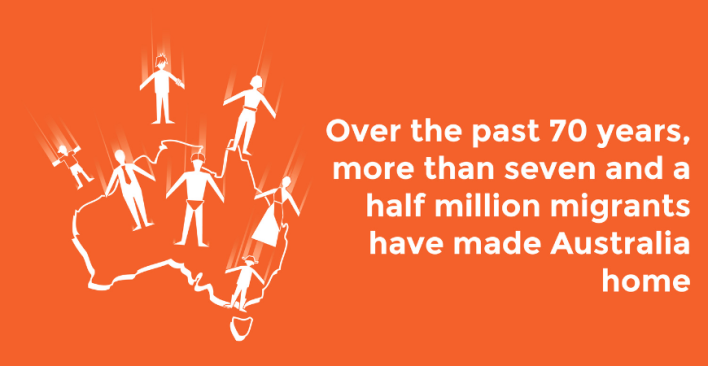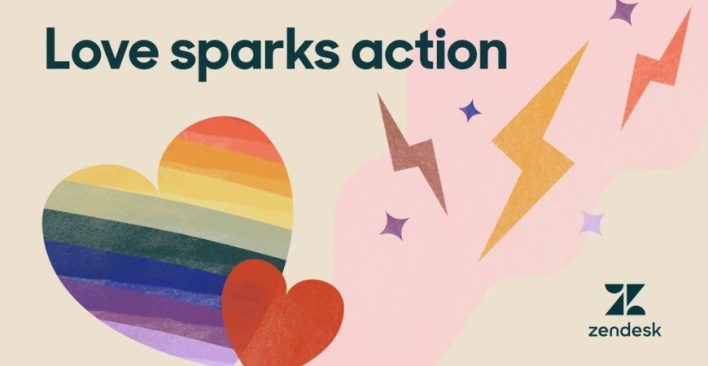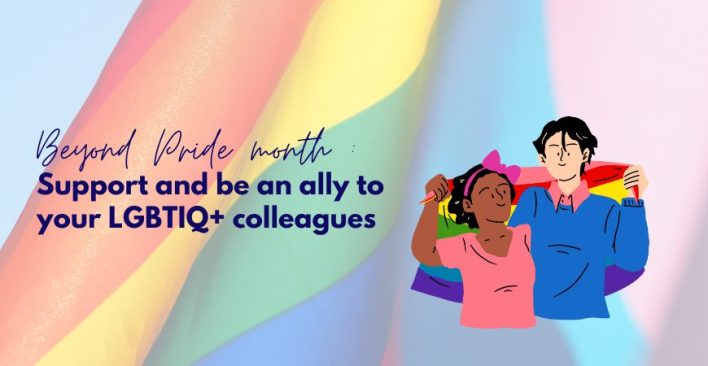Leading Not Lagging: Equitable Hiring

As we start thinking about our new year’s resolutions, let’s also start thinking about next year’s strategies to ensure that we are leading, not lagging, in the recruitment and career advancement of Transgender and Gender Diverse people. Gemma Saunders, ATC2022 speaker, shares more about how an equitable workplace starts with equitable hiring practices and what you can do to achieve just that.
March 31st is Trans Day of Visibility (TDOV). TDOV, is an annual celebration to champion Trans and Gender Diverse voices; support their art, champion their work and continue important conversations. I had the privilege (as a cisgender, queer woman and ally to our broader LGBTQIA+ community) of joining the Sapphire Program (part of Pride in Diversity) to discuss leading not lagging in the recruitment and career advancement of Transgender and Gender Diverse people. Many thanks to the amazing panel for your generosity in sharing stories and ideas.
These were some of the insights I gleaned from the Transgender & Gender Diverse (TGD) folk on the panel:
- Relying on luck should not be the determining factor of our experience although we are very grateful to have had the support of those allies in our hiring and career experiences.
- We want to be provided with choice and context (i.e. when and how we share our identity with you and what you intend to do with that information).
- Supporting us is a win for all. Editing your hiring to lead not lag will create better outcomes for other underrepresented groups.
- Respect and dignity need to be at the heart of the experience. Respond to our applications!
- Education (of recruiters/managers/teams/clients) will overcome fears, assumptions and improve hiring confidence.
Recommendations:
Reform:
Review your recruitment practices end to end with Transgender & Gender Diverse (TGD) employees and experts. Where you think you are being equal, you may need to consider where it is necessary to be equitable. Sameness isn’t fairness. This includes when you collect information and importantly, letting candidates know why & what you’ll do with their information. This means adopting unbiased interviewing and selection practices and making sure your role descriptions and selection criteria are robust and aligned. At the Pride in Diversity event, we talked about three core approaches which can work in harmony with one another:
- Edit: This could include evaluating the gendered language used in your adverts using tools such as textio, providing a statement on your adverts (*see example below) and ensuring people leaders have access to toolkits, resources and training via organisations like Pride in Diversity & Minus 18.
- Parallel Pipelines: We heard examples of employers recognising the barriers for TGD people and creating specific career attraction, mobility and development programs. Where these initiatives focus on multiple barriers such as attracting women and TGD people who have been out of the workplace for 6 months or more, the benefits can be wide reaching. This type of focus can provide benefits in addressing intersectional inequities and provide the business with a unique talent pool who are usually discounted via traditional hiring approaches.
- Hiring Reform: Broader reform requires assessing the purpose, role and aspiration of the hiring function which is a more of a strategic activity. This requires the hiring function to ask themselves what their winning aspiration is and what their unique contribution is first and foremost. With this in mind, they will then be able to organise their people, priorities, practices and systems around the experience and outcomes they are looking to create. This should specifically address the hiring function’s role in reducing inequality and providing talented people to the company who will accelerate the business strategy.
*We are committed to building a diverse workforce where everyone can belong, contribute and grow. We value the lived experience and talents of our First Nations Peoples, people of every ethnicity, faith, age, disability, culture, lanuguage, gender identity, sex, sexual orientation and welcome applications from all. We are addressing the barriers facing underrepresented groups in our workplace by constantly evolving our hiring practices to create more inclusive experiences and equitable outcomes.
Educate:
Invest in making your recruiters and hiring managers aware and trained on TGD issues and opportunities. This includes providing training and ensuring they are measured on candidate experience via OKRs/KPIs in their performance goals. Not all TGD colleagues or candidates are out at work, and no two people will have an identical journey or transition. So remember to treat everyone uniquely, and without bias. Unfortunately 1 in 3 UK employers say they wouldn’t hire a transgender person according to a report by Black Trans Foundation UK so addressing management fear with training and clear expectations from senior executives is essential.
Commit:
Employers should consider commitments to hire TGD candidates not simply under the broad rainbow images. Make this commitment and back it up with the data to show your understanding of why the commitments addresses the barriers and inequity in the world of TGD folks. De-gender your targets, adverts and language. Use “they/them” as a default. Ensure you have 40/40/20 targets not 50/50 gender targets as nothing tells a non-binary colleague they aren’t welcome in the exec team more than a target that literally denies their existence.
Demonstrate:
Show candidates rather than tell them. TGD candidates have every right to be skeptical given the statistics and their experiences to date. Making a statement only goes so far unless it’s backed up with action. At every point, a TGD candidate will be assessing the environment to ensure it’s safe and you (as the recruiter or hiring manager) have a role to play in creating a safe and inclusive spaces which means educating yourself. On your careers page, adverts and key hiring process points advise candidates that they can access someone in your team who is trained and sensitive to the barriers TGD people face through the application process, and in work.
Finally:
Whilst every experience is unique, many TGD people feel like they have to rely on “luck” in every interaction. The luck being encountering allies who see their potential and treating them with respect. The invitation to you all is to make sure you treat everyone with dignity and respect so luck isn’t the determining factor of their experience or job offer.
This article originally appeared in Gemma’s Workplace Edit blog and has been republished here with permission.
Related articles
Leave a Reply
Sign up to our newsletter
Get a weekly digest on the latest in Talent Acquisition.
Deliver this goodness to my inbox!


